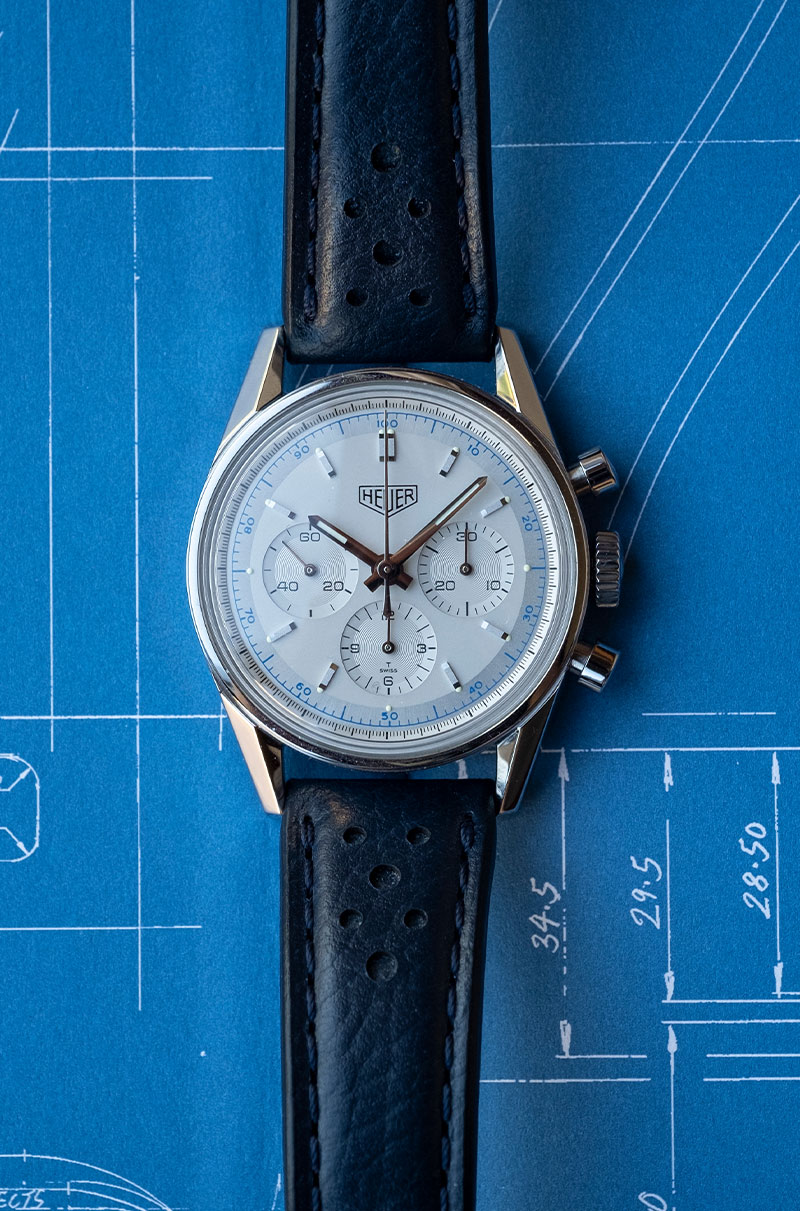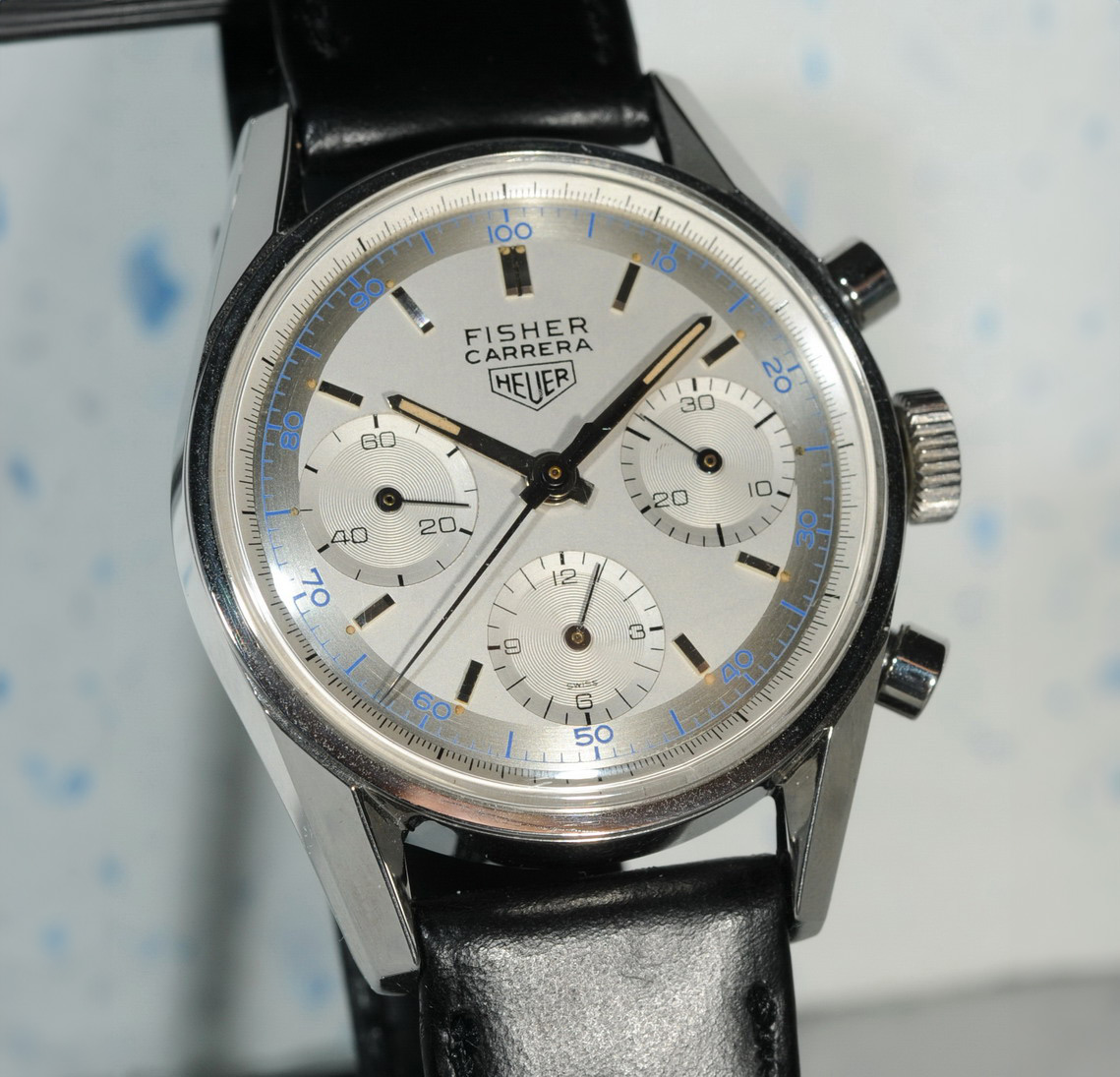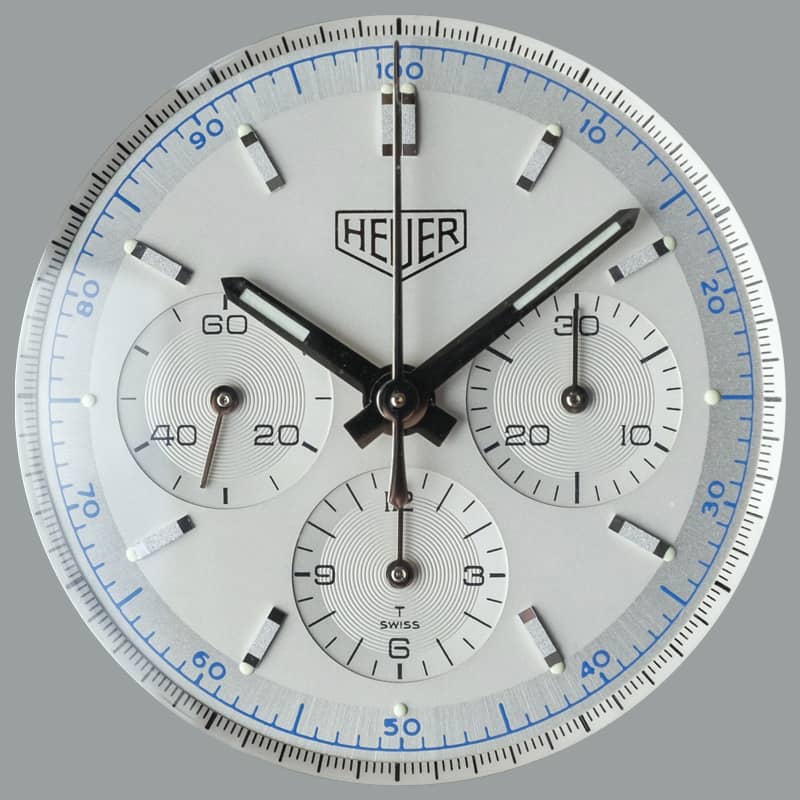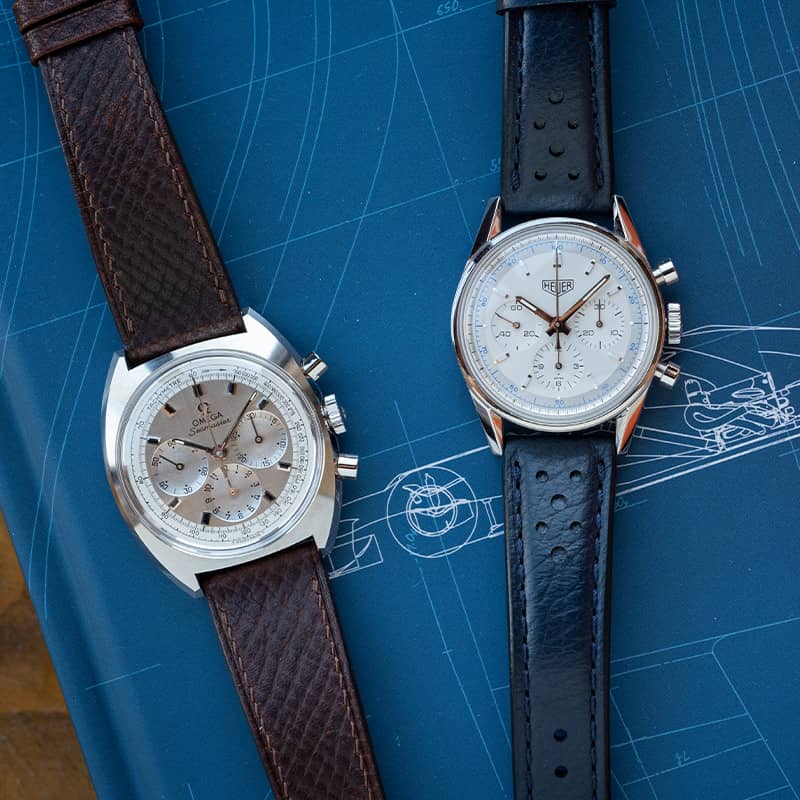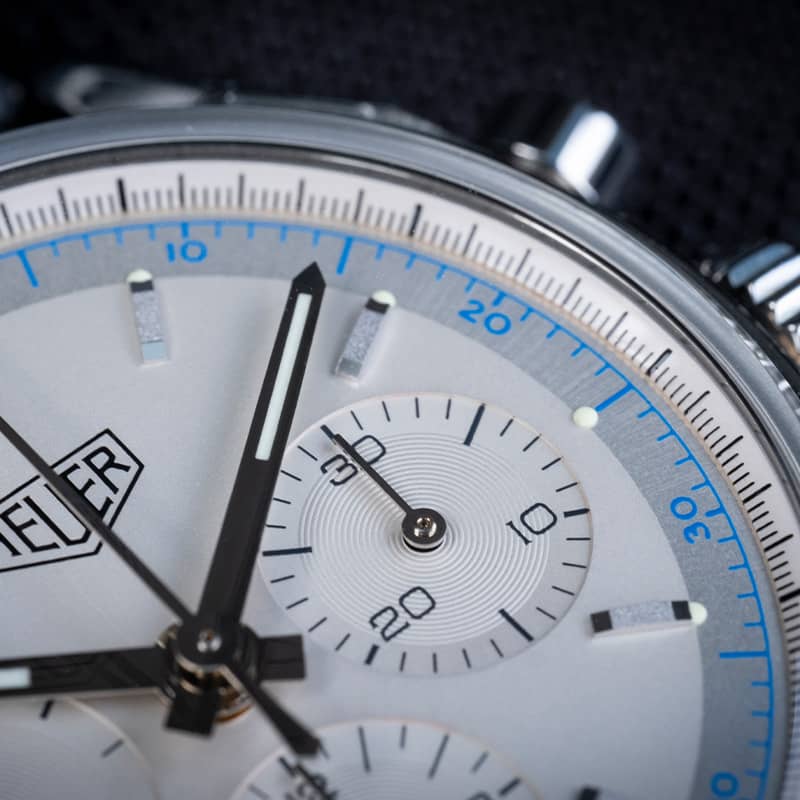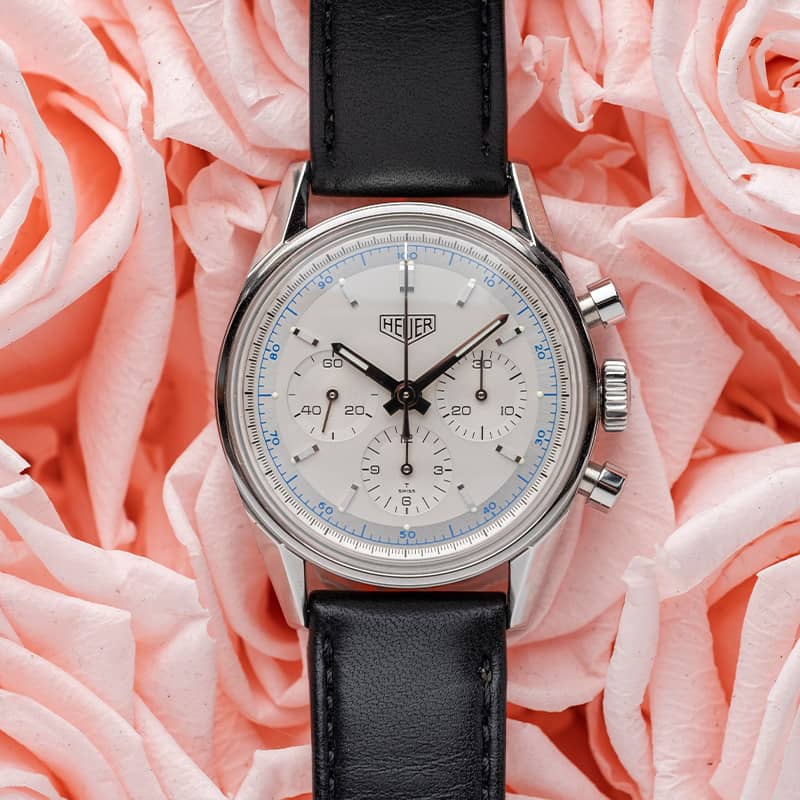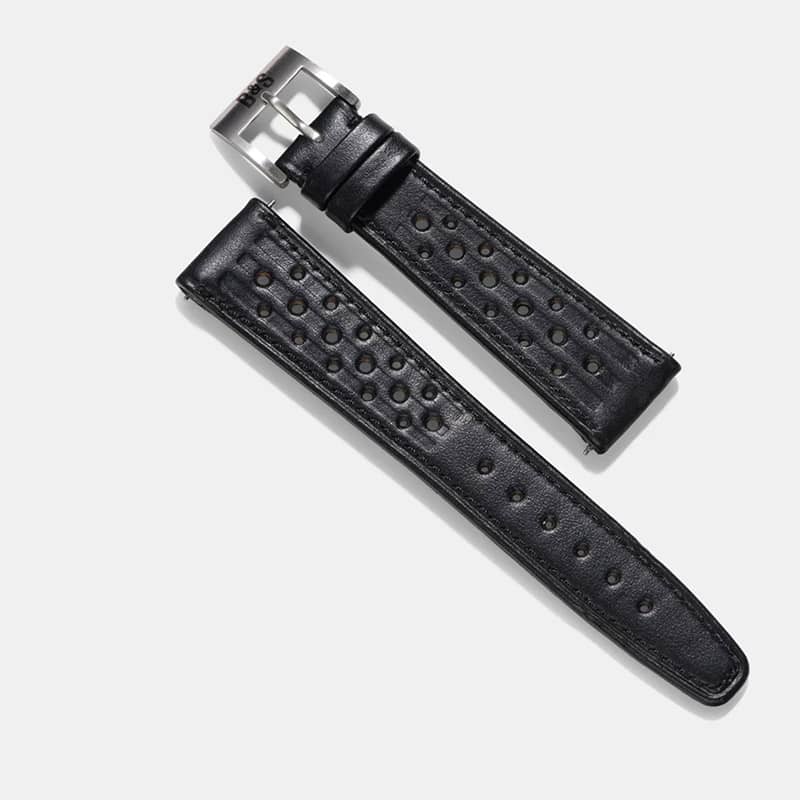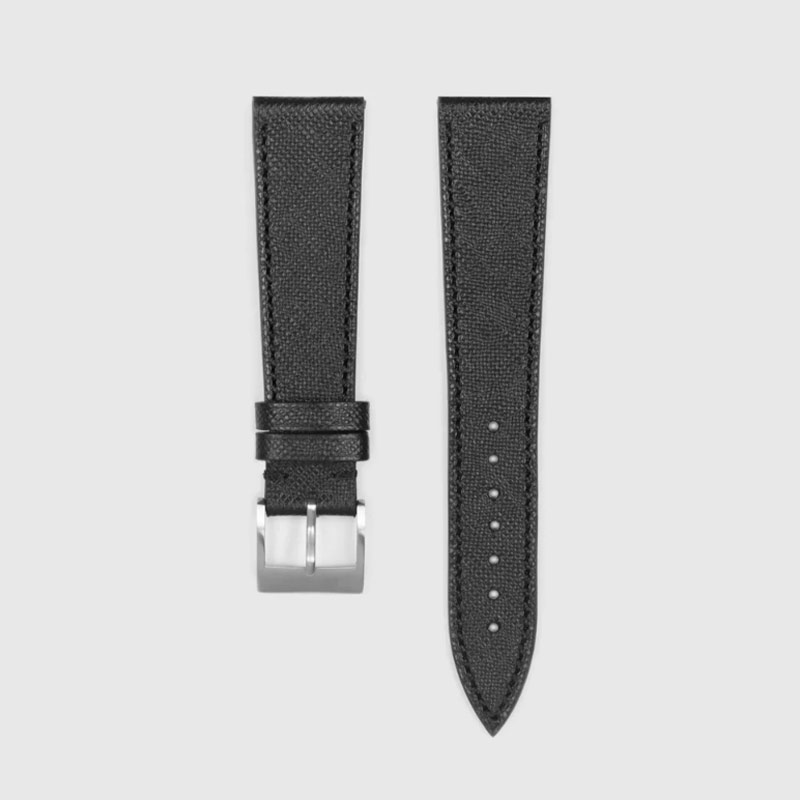Quick facts
Brand: Heuer
Model: Carrera re-edition 1996
Reference: CS3110
Year: 2001
Case: Stainless steel, 36mm
Caliber: Lemania 1873, manual wound
What about it
The Carrera CS3110 reissue, a masterful homage, pays tribute to the iconic Carrera models from the swinging 1960s, capturing the essence of an era defined by elegance and speed.
The Carrera re-edition was launched with three models in the range - the black-dial Carrera in a stainless steel case (CS3111), the white-dial Carrera in a stainless steel case (CS3110) and the white-dial Carrera an 18 karat gold case (CS3140). This first Carrera re-edition was true to the original Heuer Carrera from 1963 in almost every aspect, from the 36mm stainless steel case, to the geometry of the pushers and crown to the dial and sub-dial design. All three versions of the 1996 Carrera re-edition have the decimal scale printed on the dial, which was one of the versions available in 1963 (the reference 2447 D). The decimal minutes scale evokes the use of the Carrera chronograph as a tool for racing, as rally instructions and navigation are expressed in 1/100s of minutes, rather than seconds. The "telltale" to distinguish the re-edition from the original models from 1963 is that the original models had the text "Carrera" on the dial, above the Heuer shield, while the re-edition does not.
The Carrera re-edition models from 1996 are powered by the manual-wind Lemania 1873 movement. While the Lemania 1873 substitutes cams for the column wheel used in the Valjoux 72 movement of the original Carrera, in an era when many chronographs were growing larger, the relatively small size of the movement (12 ligne, versus 13 for the Valjoux 72) allowed TAG Heuer to maintain the dimensions of the original Carrera case.
Heuer Carrera Ref. 2447D
The Heuer Carrera stands among the most coveted chronographs ever produced. Introduced in 1963, it shares the same dial maker (Singer) and movement manufacturer (Valjoux) as the Rolex Daytona, released in the same year.
Jack Heuer prioritized legibility when designing watches while at the helm of Heuer. He first became obsessed with dial readability after taking a course on the subject at the Swiss Federal Institute of Technology in Zürich. In that time, one of his realizations was that the presence of additional tracks or registers on the dial was unnecessary, and it was better to have something cleaner and easier to read. This was the genesis of the original Carrera design. To read more on the history of the Carrera, click here.
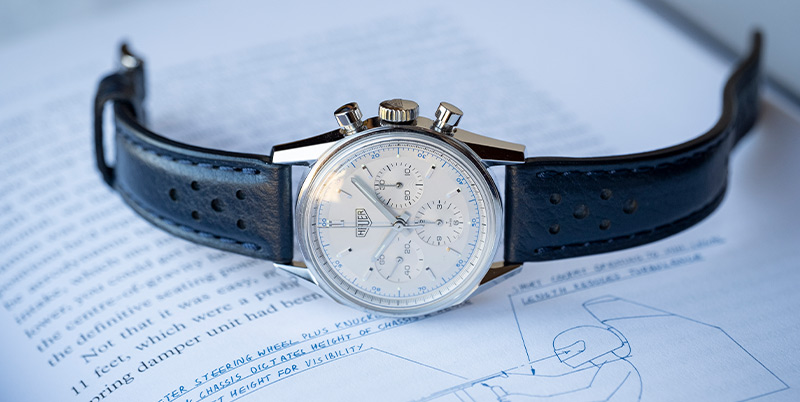
Market
Availability: rare
Less than 10 on sale
Pricing: 3,000 - 4,000 €
(Dec 2023)
References
Explore the resources on vintage Carrera I've mentioned earlier in the texts - they're a great starting point for further knowledge!
Straps
Some recommended strap options for this watch. External links to their webshops.
